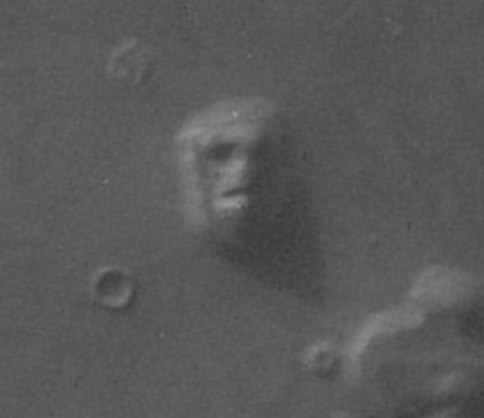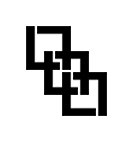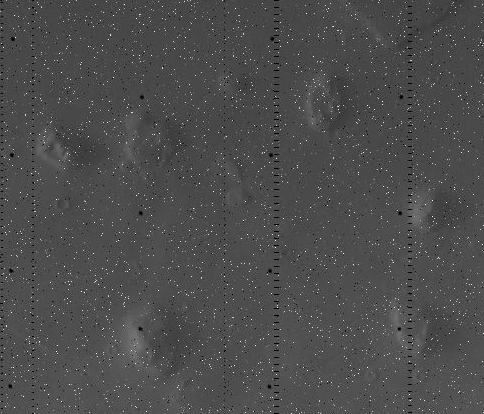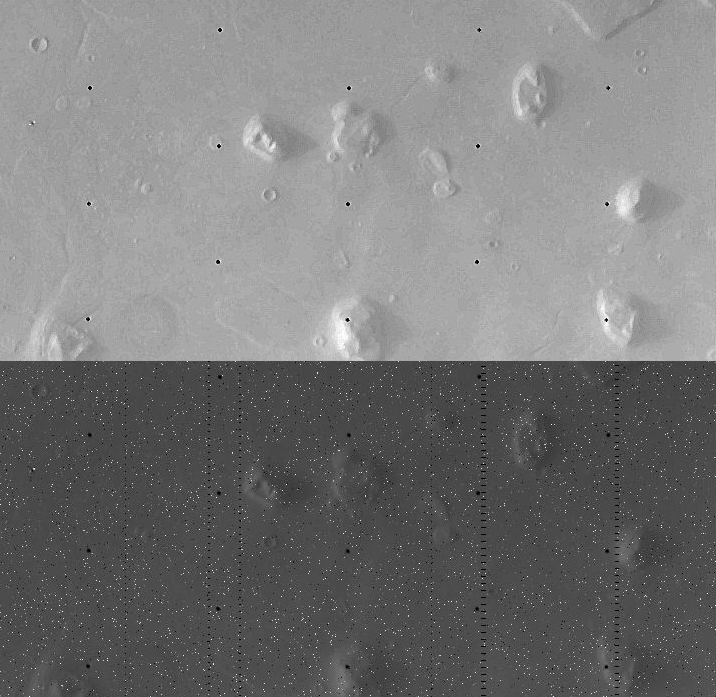The Law of Prägnanz and the Face on Mars
July 2, 2008

Figure A. Processed Viking image of "The Face on Mars"
So what does the Face on Mars have to do with the Law of Prägnanz? For that matter, what is the Law of Prägnanz? The Law of Prägnanz is one of the fundamental principles of gestalt perception and deals with the way in which people perceive visual information.
In fact one could call Law of Prägnanz the Occam's Razor of visual perception. In a nutshell, the Law of Prägnanz says that when confronted with visual information, people will attempt to organize that information into the simplest form possible. People will mentally process the visual information to create a mental image that:
- is symmetrical
- contains the simplest shapes possible
- contains the fewest number of shapes

Figure B. What Do You See?
Take a look at Figure B. What do you see? The Law of Prägnanz says that you will see three overlying squares. Three is the smallest number of shapes present with a square being the simplest shape possible. In reality what I did was to create a shape that was composed of six independent capital Ls using a sans serif font. I then inverted three of them and positioned them opposite the original Ls. Our mind then perceives these 6 independent lines as being three overlapping squares.
What about the "The Face on Mars"? The Law of Prägnanz can also be used to explain why people perceive a mesa on Mars as a face. Figure A is a processed version of the feature known as "The Face on Mars" This image was captured by the Viking 1 Orbiter on July 25, 1976.
The "face" as shown in Figure A is a typical example of the type of processed image used to illustrate this feature. This image has been cleaned to remove noise; had it's contrast enhanced; and been enlarged by 300 percent. Just as the Law of Prägnanz says that when a person views this image they will seek to mentally interpret it in the simplest, most orderly and symmetric form possible, the image processing functions used to clean and enhance the image have also acted to simplify the image. In this case, the simplest way to interpret the form is as a human face with the process of creating a clean, viewable picture strengthening that interpretation.

Figure C. Raw Unprocessed Original Size "The Face on Mars"
The raw unprocessed version of the original "The Face on Mars" image is shown in Figure C, being a portion of the original Viking image containing the "Face" It shows the raw image data as received. No image processing has been performed on this picture. As you can see the mesa known as "The Face" is not alone. Cydonia, that region of Mars in which the "The Face" is located, abounds with mesas.
In Figure D I've provided a side by side view of the processed image on top and the raw image below at the original size so that the effects of image processing can be clearly seen.

Figure D. Head to Head Comparison of Raw vs Processed Cydonia Region
Subsequent higher resolution views of "The Face on Mars" by the Mars Global Surveyor and Mars Odyssey missions have clearly shown this to be nothing more than just another Martian mesa, making it much more difficult for those who believe in the idea that this is a monument of alien construction to substantiate their claims.
